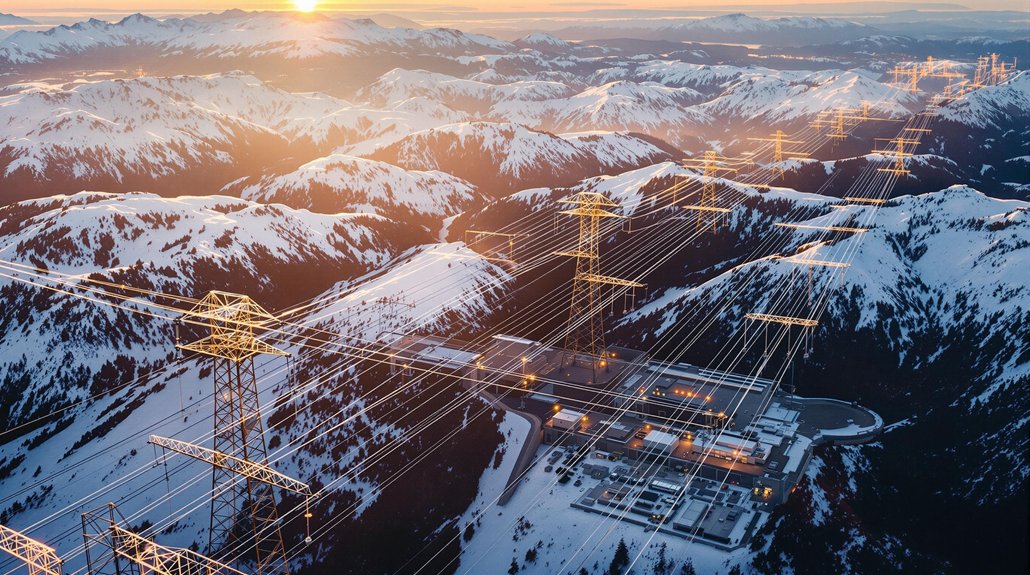Electricity doesn’t recognize borders. Every day, millions of American homes rely on power generated in Canada and the Pacific Northwest without realizing it. This invisible flow crosses vast distances through high-voltage transmission lines, creating a silent dependency few consumers notice. When Californians turn on their air conditioners during summer heat waves, they’re often using energy from hydroelectric dams hundreds of miles away. This interconnected system faces growing challenges as demand increases.
While most Americans don’t think about where their electricity comes from, a complex network of power flows shapes the nation’s energy landscape. Electricity in North America typically moves from north to south, with significant amounts flowing from the Northwest to California and the Southwest regions. This pattern reveals California’s dependence on imported power, as the state relies on neighboring regions for about 25% of its electricity needs.
The Midwest plays an important role too, sending coal-generated electricity eastward during peak usage hours. Meanwhile, nuclear power from the Chicago area helps reduce coal usage during off-peak times. These flows change with the seasons, creating a dynamic energy exchange across regions.
In the Pacific Northwest, spring and early summer bring a surge in hydroelectric power production. Rivers swell with snowmelt, generating excess electricity that’s exported to neighboring areas. This seasonal variation affects how much power moves between states throughout the year.
Recent technological growth has created new challenges for the power grid. Data centers, often located near residential areas, cause distortions in electricity flow. AI development has increased power demand, creating localized surges that can strain nearby communities. The United States currently has the highest number of data centers globally, further intensifying pressure on the electrical infrastructure. This growing tech sector demand competes with residential needs for limited grid capacity.
Power reliability varies widely across the country. Detroit residents face the most frequent outages, with 44.8% reporting power problems. In contrast, Miami experiences the fewest disruptions, with only 5.8% of households affected. Homeowners report more outages than renters, at 28.3% versus 19.9%.
Many American homes aren’t ready for complete electrification. About 48 million single-family households may need electrical panel upgrades. Most homes under 2,500 square feet (70%) have panels smaller than 200 amps, which limits their capacity to support all-electric appliances. Smart panel technology offers a solution by automatically managing loads during peak demand times, potentially avoiding costly service upgrades. The integration of lithium-ion batteries for home energy storage is becoming increasingly important as prices continue to drop, offering homeowners a way to store excess renewable energy for use during outages.
As the nation’s energy needs evolve, understanding these hidden power dependencies becomes increasingly important for ensuring reliable electricity access for all communities.








